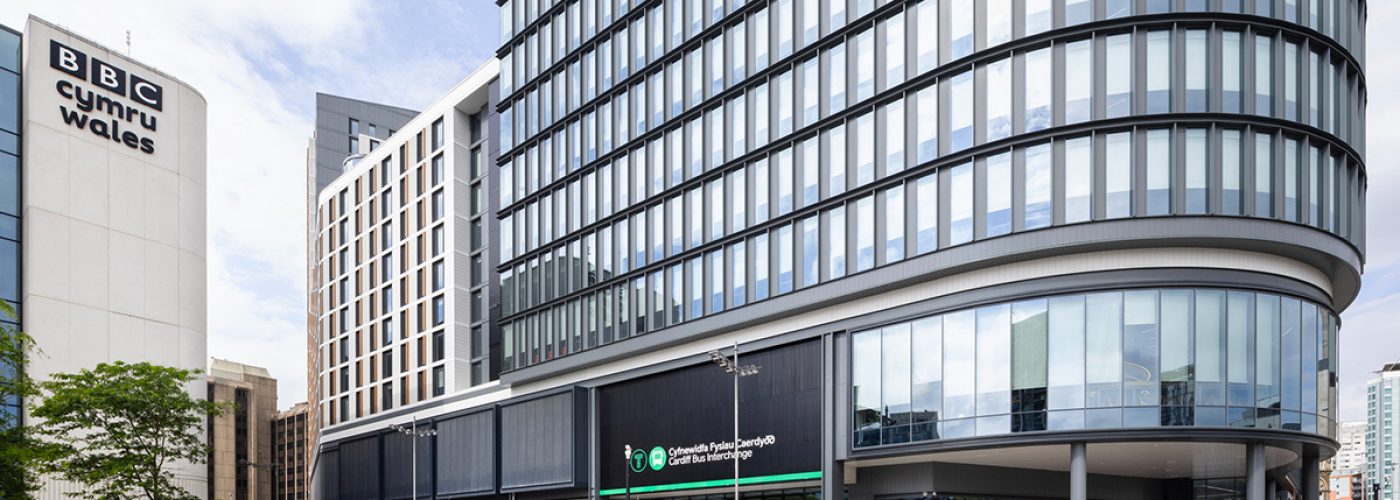A new £5.5 million bus interchange, designed by BDP and operated by Transport for Wales, has opened in Cardiff. The centralised bus facility located next to Cardiff Central Railway Station creates a sustainable travel gateway to Cardiff, providing improved connections to the area by integrating bus and rail services with local walking routes, cycle ways and taxis.
Multidisciplinary design practice BDP provided architectural and interior design, branding and wayfinding consultancy for the project which is part of the Welsh Government’s broader initiative to develop an integrated travel network for the people of Wales making public transport the easiest choice for all.
Within the 2,235sqm interchange, the central feature is the bus terminus which includes 14 bus bays along with ancillary space for retail, food and beverage outlets and public toilet facilities to enhance passenger comfort for onward travel. A mezzanine level houses Transport for Wales’s strategic operations centre for south Wales.
Central to BDP’s design is a focus on accessibility and inclusivity. Enhanced links between the bus interchange and the railway station are supported by clear wayfinding for a seamless travel experience. A striking red wall in the concourse provides a key visual orientation and branded identity focal point. Features such as tactile flooring routes and a braille accessibility map assist blind and partially sighted customers and the interchange includes a changing places room and a fully equipped family room.
BDP’s collaborative approach was at the heart of the project with the implementation of an extensive stakeholder engagement programme including consultations with the local authority, transport operators, service users, police, fire service, the local community and accessibility groups to ensure that the design meets the needs of all users.
Working with project manager and lead consultant Mott Macdonald, BDP addressed specialist security and fire safety design requirements. In addition, BDP conducted a complementary study which explored how the wider public realm around central Cardiff could be adapted to further improve connectivity between transport modes including active travel, wayfinding, technology, branding and green infrastructure.
Building, Design & Construction Magazine | The Choice of Industry Professionals





